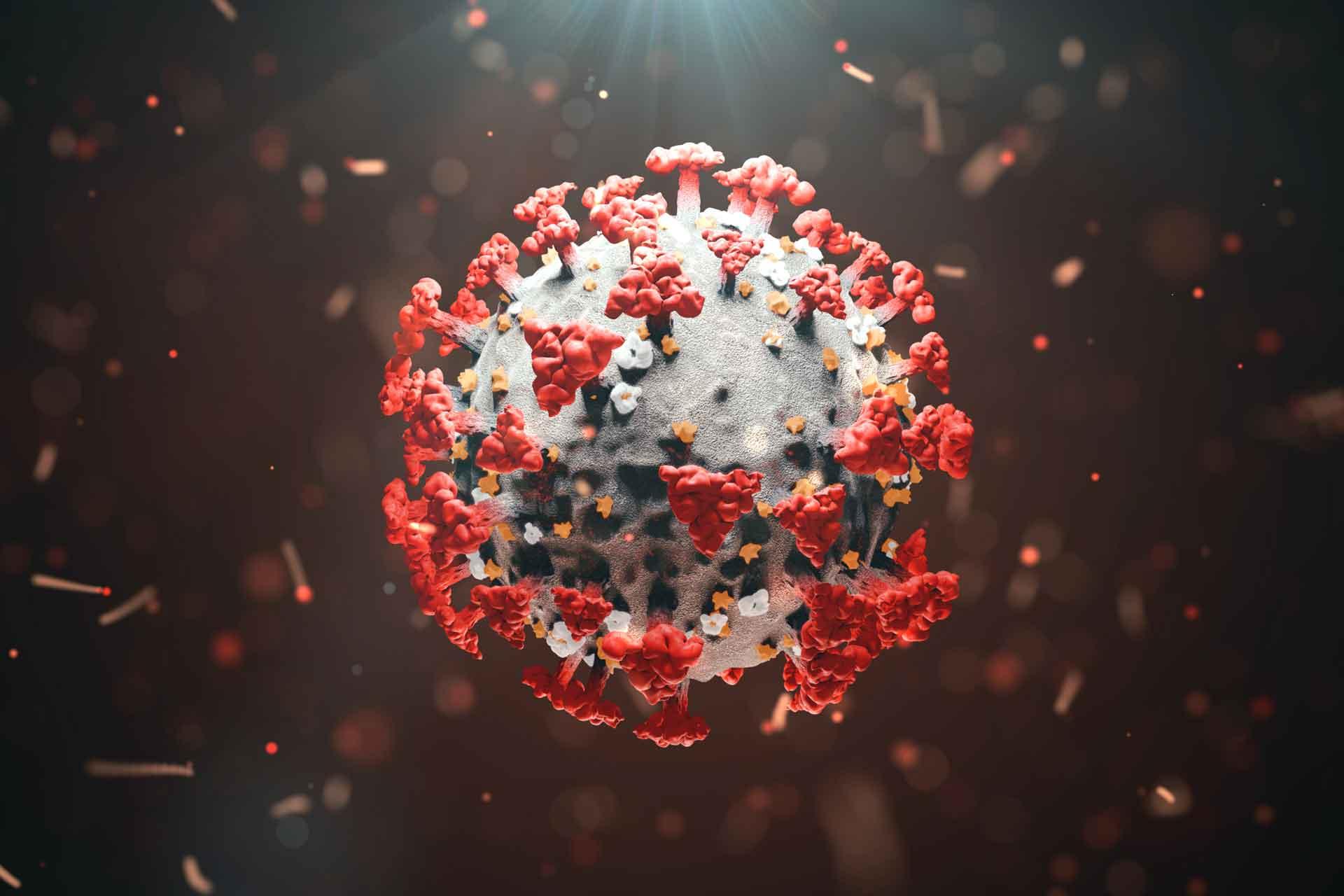Severe acute respiratory syndrome coronavirus 2 (SARS-CoV-2), the virus that causes COVID-19, is thought to have originated in bats, but how it jumped hosts to infect humans is unclear, as is the potential for the virus to infect other animal species. Researchers from The Pirbright Institute have identified key differences in SARS-CoV-2 that may be responsible for the jump from bats to humans, as well as establishing which animals have cellular receptors that allow the virus to enter most effectively.
Identifying the source of the COVID-19 outbreak has been challenging because no immediately related viruses have been found in animals. This situation differs from the 2002-2003 severe acute respiratory syndrome coronavirus (SARS-CoV) epidemic, where scientists were able to identify closely related isolates in both bats and civets, where the virus is thought to have adapted to infect humans (known as an intermediate host).
However, in the current COVID-19 outbreak, scientists do not yet know the identity of the intermediate host or have similar samples to analyse. But they do have the sequence of a related bat coronavirus called RaTG13 which shares 96 percent similarity to the SARS-CoV-2 genome. The Viral Glycoproteins Group at Pirbright therefore compared the genomes of both viruses and identified several important differences between their spike proteins.
SARS-CoV-2 and other coronaviruses use their spike proteins to gain entry to cells by binding to their surface receptors, for example ACE2. Like a lock and key, the spike protein must be the right shape to fit the cell’s receptors, but each animal’s receptors have a slightly different shape, which means the spike protein binds to some better than others.
To examine whether these differences between SARS-CoV-2 and RaTG13 were involved in the adaptation of SARS-CoV-2 to humans, scientists swapped these regions and examined how well these resulting spike proteins bound human ACE2 receptors using a method that does not involve using live virus.
Their results, published in PLOS Biology, showed SARS-CoV-2 spikes containing RaTG13 regions were unable to bind to human ACE2 receptors effectively while the RaTG13 spikes containing SARS-CoV-2 regions could bind more efficiently to human receptors, although not to the same level as the unedited SARS-CoV-2 spike protein. This potentially indicates that similar changes in the SARS-CoV-2 spike protein occurred historically, which may have played a key role in allowing the virus to jump the species barrier.
The team noted that these genetic adaptions were similar to those made by SARS-CoV when it adapted from bats to infect humans. This suggests that there may be a common mechanism by which this family of viruses mutates in order to jump from animals to humans. This understanding can be used in future research to identify viruses circulating in animals that could adapt to infect humans (known as zoonoses) and potentially pose a pandemic threat.
Researchers also investigated whether the SARS-CoV-2 spike protein could bind to the ACE2 receptors from 22 different animals to ascertain which of these, if any, may be susceptible to infection. They demonstrated that bat and bird receptors made the weakest interactions with SARS-CoV-2. The lack of binding to bat receptors adds weight to the evidence that SARS-CoV-2 likely adapted its spike protein when it jumped from bats into people, possibly via an intermediate host.
Dog, cat, and cattle ACE2 receptors were identified as the strongest interactors with the SARS-CoV-2 spike protein. Efficient entry into cells could mean that infection may be more easily established in these animals, although receptor binding is only the first step in viral transmission between different animal species.
An animal’s susceptibility to infection and its subsequent ability to infect others is reliant on a range of factors including whether SARS-CoV-2 is able to replicate once inside cells and the animal’s ability to fight off the virus. Further studies are needed to understand whether livestock and companion animals could be receptive to COVID-19 infection from humans and act as reservoirs for this disease.
Dr Dalan Bailey, head of the Viral Glycoproteins Group at Pirbright, said: “Using molecular techniques to study coronavirus spike proteins in isolation, without ever needing to work with the SARS-CoV-2 virus, has enabled us to take an in depth look at how genetic differences in coronavirus spike proteins and animal ACE2 receptors influence which animals the virus may be able to infect. Uncovering the common traits that allow viruses to jump between animals and humans helps us to identify potential reservoirs of disease and forewarn us of future threats.”
This research was funded by the Medical Research Council (MRC) the Biotechnology and Biological Sciences Research Council (BBSRC) and Innovate UK, all part of UK Research and Innovation, the Royal Society and Wellcome Trust.
